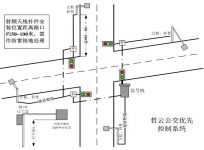
Smart Bus Priority Solution
[ad_1]
Project Background
In recent years, local government departments have invested a lot of manpower and material resources to improve urban public transportation. With the construction of infrastructure and major projects, as well as the elimination, renewal and expansion of bus vehicles, the service capacity of urban transportation facilities has been gradually improved. Alleviated traffic problems. However, simple infrastructure construction and traffic control management technology can no longer meet people’s growing demand for public transport services.
In order to make traffic more convenient and smooth, the concept of Intelligent Transportation System (ITS) has attracted more and more attention. The system combines advanced computer processing technology, information technology, data communication transmission technology, automatic control technology, artificial intelligence and electronic technology, etc. Effectively and comprehensively apply it to the transportation management system, and establish a punctual, fast, and efficient transportation management system that can play a role in a large range in all directions.
After a long period of market research, Zheyun Technology Co., Ltd. has launched an accurate and efficient bus priority control system, which provides management departments and government decision-making agencies with fast supervision and management tools and detailed and complete information. Implementation provided favorable technical support and guarantee.
System functions
The system relies on the constantly changing information acquired for decision-making control. The system has the means to collect information such as vehicle location and intersection traffic status. On this basis, the reasonable control logic has good adaptability and effectiveness.

The system performs signal control in accordance with the normal conditions in a given area, and does not require frequent information collection and update. The system controls according to a preset plan instead of constantly changing traffic information. The conditions considered by the system are usually the traffic flow of the intersection in time intervals and the demand for bus vehicles to pass through the intersection;
Priority decision-making is carried out based on the operation plan of the bus. There are many ways to combine signal control with the operation plan, such as referring to a static operation plan or a dynamic operation plan, which requires the signal control system to establish a reliable communication method with the bus operation company to ensure the plan. Timely transmission; the main difference from real-time control is that the system can not care about the specific vehicle location, and only rely on the operation plan to formulate the phase control plan for the intersection.
Taking the time interval of bus passing through intersections as the control reference index to prevent the occurrence of car collusion, it can improve the transportation efficiency during the low peak period of passenger transportation, which is more suitable for the situation of good traffic conditions and low bus transportation demand, and has certain bus operation management The role of.
System advantages
Realize the identification of public transportation vehicles, and give priority to intersections with targeted vehicles;
Develop a complete signal priority plan to meet the bus priority needs in different situations;
Choose a suitable priority strategy to increase the vehicle crossing rate;
Realize the coordinated control of vehicle operation plan and traffic signal.
[ad_2]



